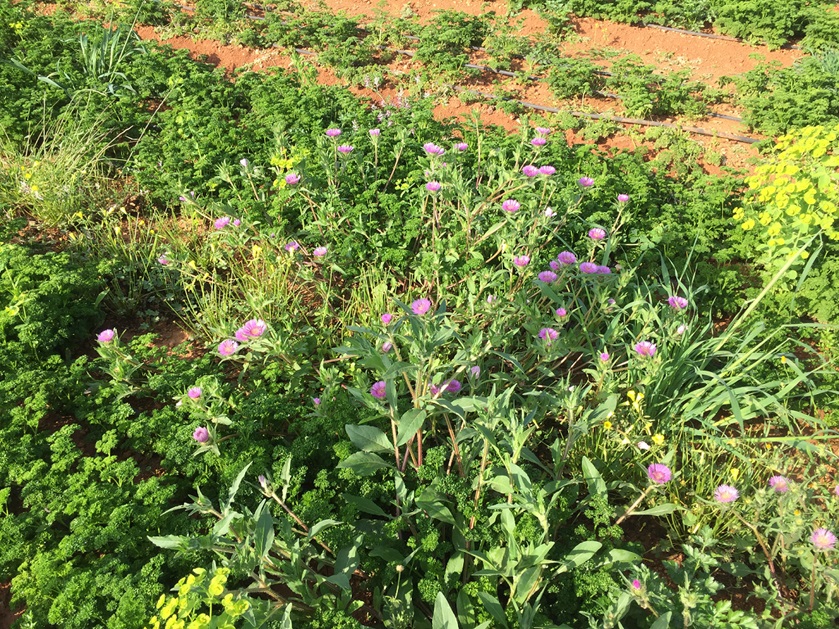15 Best Practices for Maximizing Herbicide Efficiency and Safety
Herbicides are essential tools in modern agriculture, helping farmers manage weed infestations and maximize crop yields. However, the responsible application of herbicides is crucial to ensure both their effectiveness and minimize their environmental impact. Here are strategies for responsible herbicide application that farmers can adopt to achieve optimal results while safeguarding the environment.
1. Consider Microclimate and Weather Conditions
Weather conditions have a direct impact on herbicide performance. Consider the following factors:
Wind speed: Apply herbicides during calm conditions with low wind speeds to prevent drift and ensure the chemicals reach their intended target. The optimum wind speed range to avoid herbicide drift typically falls between 3 to 10 miles per hour (5 to 16 kilometers per hour).
Humidity: High humidity can prolong the herbicide’s drying period, increasing its absorption duration. However, high humidity can also increase the risk of drift. Since the herbicide droplets are less likely to evaporate quickly, smaller droplets might stay suspended in the air for longer periods, potentially increasing the risk of drift.
Dew conditions can dilute the herbicide, reducing its effectiveness. Schedule herbicide application during times of the day when dew has mostly evaporated, typically in late morning or early afternoon.
Rain: Avoid applying herbicides just before rain, as it can wash them off, reducing their effectiveness and potentially contaminating nearby waterways.
2. Select Herbicides Compatible with Your Soil’s pH
Different herbicides work best under specific pH conditions. Conduct soil tests and choose herbicides that are suitable for their soil type. Some herbicides are more effective in acidic soils, while others perform better in alkaline soils.
For example, the persistence and availability of herbicides from the triazine and sulfonylurea families increase at higher soil pH (greater than 7.0), enhancing their uptake by plants. On the other hand, Imidazolinone herbicides show greater persistence and plant uptake availability in soils with a lower pH (less than 6.0).
3. Timing is Key
The effectiveness of herbicides can be highly dependent on timing. Applying pre-emergent herbicides too late may be ineffective if weeds have already germinated. After weed seeds have already germinated or emerged, the herbicide’s efficacy diminishes significantly.
4. Implement Herbicide Rotation
To prevent weed resistance, it is essential to rotate herbicides with different modes of action. This practice helps manage weed resistance and maintains the long-term effectiveness of herbicides.
The Herbicide Resistance Action Committee (HRAC) classification is a valuable tool for farmers and agronomists in the fight against weed resistance. HRAC is an international organization that categorizes herbicides based on their modes of action, grouping them into different herbicide groups or “Herbicide Mode of Action (MOA) Groups.” Each group contains herbicides that share similar mechanisms for controlling weeds.
5. Choose the Right Herbicide Formulation
The choice between liquid and granular herbicide formulations can impact application effectiveness. Liquid herbicides are generally more suitable for even coverage, while granular types can be better for pre-emergent applications. Understanding the formulation that suits your specific needs is crucial.
6. Target Weeds with Spot Applications
Instead of blanket applications, target specific weed-infested areas to minimize the development of resistant weed strains. Spot applications conserve resources and reduce environmental impacts.
7. Utilize Precision Application Techniques
Utilize GPS-guided equipment, drones, decision-support apps and other innovations to achieve precision application, minimizing waste and ensuring targeted herbicide delivery. These technological advancements enable farmers to employ data-driven strategies for optimal herbicide use.
8. Improve Efficiency by Mixing Herbicides
Sometimes, mixing two or more herbicides can enhance effectiveness against a broad spectrum of weeds. However, it’s important to ensure that the mixtures are compatible and won’t harm the crop. Consult with agricultural experts or herbicide manufacturers for guidance on safe and effective herbicide mixing.
9. Follow Herbicide Label Instructions
Herbicides come with specific instructions regarding application rates, timing, and safety precautions. Reading and following these guidelines is crucial for ensuring effectiveness and safety. Failure to adhere to label instructions can lead to unintended consequences.
10. Calibrate the Application Equipment
Proper calibration of sprayers and other application equipment is essential to ensure the correct amount of herbicide is applied. Over-application can be harmful to crops and the environment, while under-application may be ineffective against weeds. Regular equipment maintenance and calibration are necessary.
11. Plant Resistant Varieties
When using herbicides like glyphosate in post-emergent applications, ensure that the crop is genetically modified to withstand the herbicide. Using crop varieties engineered for herbicide resistance enables farmers to effectively manage weed populations while reducing overall herbicide usage.
12. Embrace Crop Rotation to Disrupt Weed Growth
Regularly rotating crops disrupts weed growth cycles, reducing the reliance on herbicides. This strategy helps prevent weed populations from becoming resistant to specific herbicides.
13. Utilize Cover Crops as Natural Weed Suppressors
Planting cover crops during off-seasons can suppress weed growth, improve soil health, and reduce the need for herbicides. Cover crops serve as a natural weed management solution while enhancing overall sustainability.
14. Maintain Environmental Awareness
Be mindful of nearby water sources, non-target plants, and wildlife when applying herbicides. Implement buffer zones and take precautions to safeguard sensitive areas.
15. Safety First
Always use personal protective equipment when handling and applying herbicides to protect against potential health hazards. Safety should never be compromised when working with herbicides.
By applying these 15 essential strategies, you can maximize herbicide effectiveness while minimizing environmental impact. Remember to prioritize safety, stay informed, and adapt practices for sustainable and responsible herbicide use. This does not only benefit your crops but also contributes to a more environmentally friendly agriculture.




